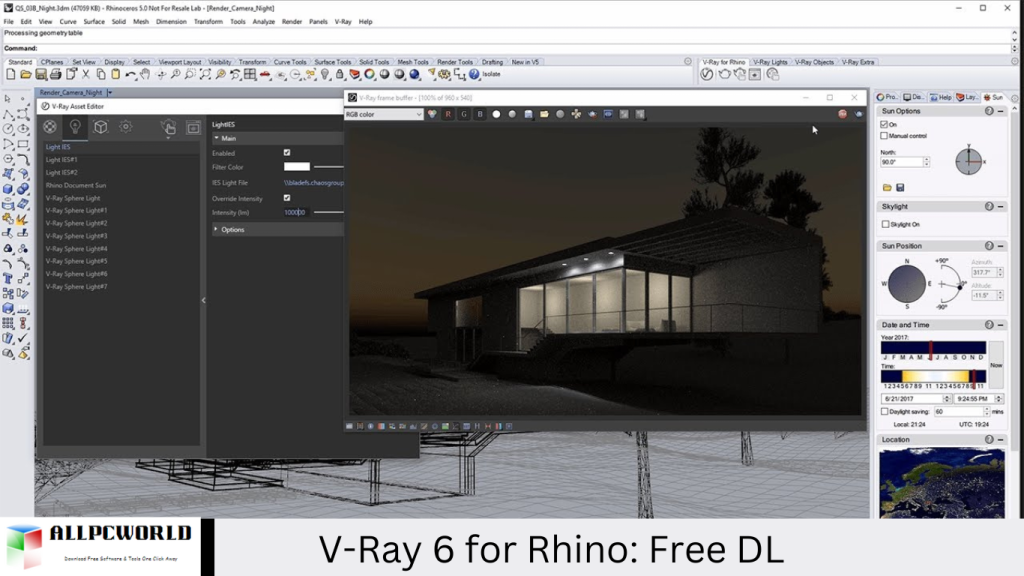Table of Contents
V-Ray 6 for Rhino, a powerful 3D rendering software. Experience live real-time views, material application, and lighting for your Rhino designs on Windows. Enjoy the full version setup for free download.
Introduction to V-Ray 6 for Rhino: Free DL
V-Ray 6 for Rhino represents a significant advancement in rendering technology explicitly tailored for Rhino users. This powerful rendering engine brings new features, enhancements, and optimizations designed to streamline the rendering process and produce stunning visualizations with unparalleled realism. In this comprehensive overview, we will delve into the critical aspects of V-Ray 6 for Rhino, highlighting its features, capabilities, and the benefits it offers designers, architects, and visualizers.
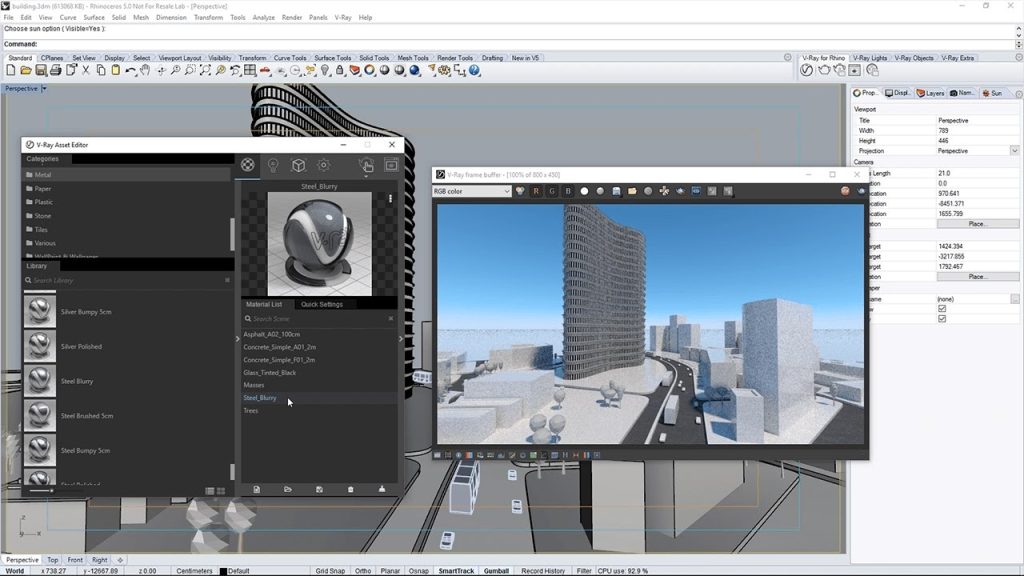
V-Ray 6 for Rhino
V-Ray 6 for Rhino is an integrated rendering solution that seamlessly integrates into the Rhino 3D modeling environment, offering users a familiar interface and workflow. Building upon its predecessors, V-Ray 6 introduces several groundbreaking features and improvements to deliver faster, more efficient, and visually stunning renders.
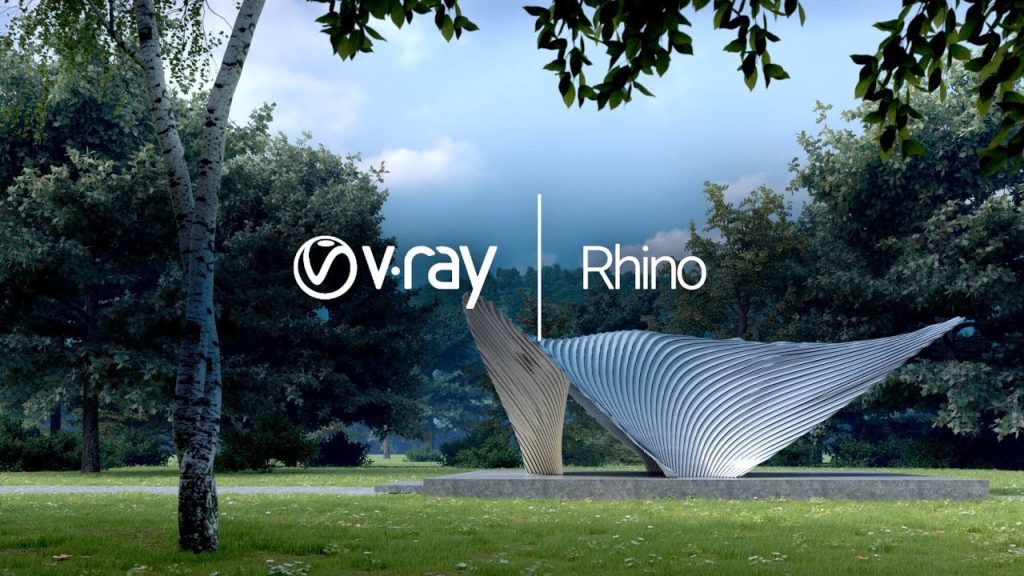
V-Ray 6 for Rhinoceros Overview
V-Ray 5 for Rhinoceros is a versatile 3D application that seamlessly blends photorealistic rendering, fluid simulation, and real-time scene exploration. It caters to novices and experts, facilitating 3D model creation, material application, and lighting in Rhino designs. With its user-friendly interface and intuitive tools, this robust software empowers users to elevate their 3D projects effortlessly. Explore Chaos V-Ray 6 for SketchUp for similar capabilities.
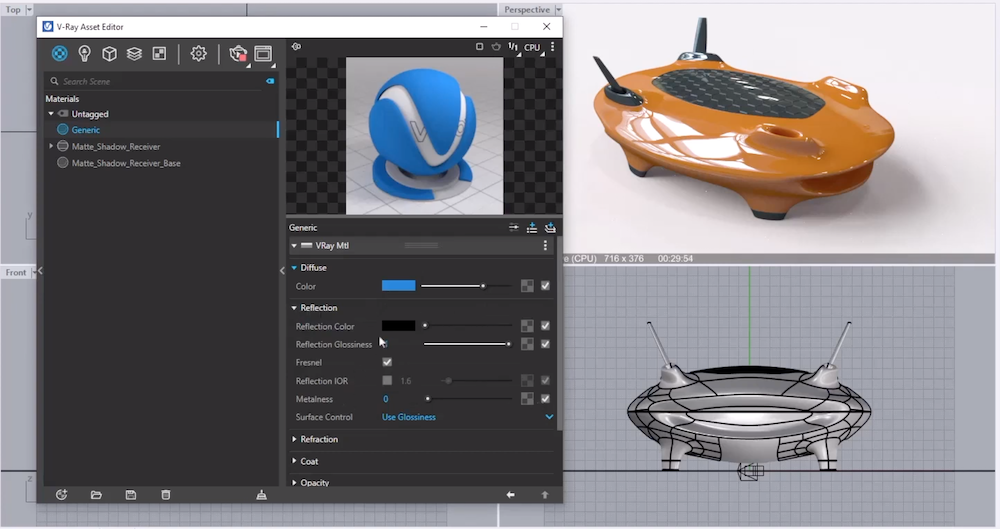
Key Feature of V-Ray 6 for Rhino
V-Ray 6 for Rhino is a comprehensive program developed to streamline the process of building models, applying materials, and lighting designs within the Rhino environment. It offers a user-friendly interface that is accessible to users of all skill levels, making it easy to harness the power of V-Ray for rendering tasks. Let’s delve into the key features and functionalities that V-Ray 6 for Rhino brings to the table:
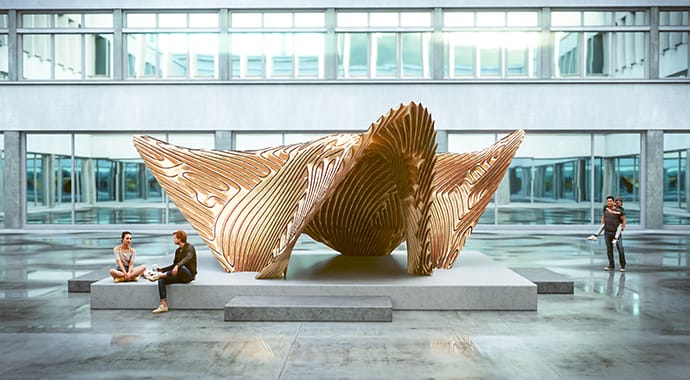
- Modeling, Materials, and Lighting: V-Ray 6 provides a seamless workflow for building models, applying materials, and lighting designs directly within Rhino. Users can easily create and manipulate 3D geometry, assign materials from an extensive library, and set up lighting scenarios to achieve the desired visual effects.
- Real-Time Design and Rendering: With V-Ray 6, users can design and refine their models in real-time, thanks to the integration of V-Ray Vision. This feature allows for instant feedback on design changes, empowering users to iterate quickly and make informed decisions throughout the design process.
- Rendering Options: V-Ray 6 offers flexibility in rendering options, allowing users to choose between super-fast GPU and CPU rendering or hybrid rendering to suit their project requirements best. This ensures optimal performance and quality for rendering tasks of varying complexity.
- Animation and Visualization: V-Ray 6 enables users to create dynamic animations and visualizations directly within Rhino or Grasshopper. Users can perform light studies, create turntables, and generate fly-through animations to showcase their designs optimally.
- Distributed Rendering: V-Ray 6 introduces a new, simple, scalable system that maximizes rendering power across multiple machines. This allows for faster rendering times and increased efficiency, particularly for large-scale projects.
- Node-Based Workflow: V-Ray 6 offers powerful functionalities through five node groups and their components, allowing users to customize their rendering setups according to their specific needs.
- Live Link Component: Users can add the Live Link component to observe design updates in real time as changes are made to the model or scene. This ensures seamless integration between the design and rendering processes, facilitating faster iteration and refinement.
- Animation Sequences: With V-Ray 6, users can create, render, and export animation sequences directly within Grasshopper, further streamlining the workflow for animation projects.
- Sun and Camera Animation: V-Ray 6 allows users to animate the movement of the sun or the camera using the V-Ray Graph and Timeline components. This enables dynamic visualization of lighting scenarios and camera movements within the scene.
- Lighting Analysis: Users can perform light-intensity evaluations of their projects and visualize the results directly within the rendered images. This helps to ensure optimal lighting conditions and visual quality for the final render.
Real-Time Design and Rendering
Real-Time Design and Rendering with V-Ray 6 for Rhino revolutionizes the creative process. Through V-Ray Vision, users experience instant feedback on design changes within the Rhino viewport. This feature enables quick iterations and informed decision-making, eliminating the need for time-consuming render iterations. Designers can explore lighting scenarios, materials, and camera angles in real time, fostering creativity and efficiency. V-Ray Vision seamlessly integrates into the Rhino interface, providing a dynamic and immersive design experience for users of all skill levels.
Processor Requirement
V-Ray 6 for Rhino supports Intel Dual Core processors or later models. This ensures compatibility with a wide range of computer systems, allowing users to leverage the rendering capabilities of V-Ray without needing high-end hardware.
Technical Details
Technical Details of V-Ray 6 for Rhino:
- Integration: V-Ray 6 seamlessly integrates into the Rhino 3D modeling environment, providing a familiar interface for users.
- Rendering Engine: V-Ray 6 utilizes a powerful rendering engine that supports advanced features such as global illumination, ray tracing, and physically accurate lighting simulations.
- Real-Time Rendering: The inclusion of V-Ray Vision enables real-time rendering directly within the Rhino viewport, allowing for instant feedback on design changes.
- Rendering Options: Users can choose between GPU, CPU, or hybrid rendering modes to optimize performance and quality based on their hardware specifications and project requirements.
- Distributed Rendering: V-Ray 6 introduces a new distributed rendering system for maximizing rendering power across multiple machines, enhancing scalability and efficiency for large-scale projects.
- Node-Based Workflow: V-Ray 6 offers a node-based workflow with five node groups and their components, providing users with flexibility and customization options for their rendering setups.
- Live Link Component: The Live Link component facilitates real-time updates between the design and rendering processes, ensuring seamless integration and workflow continuity.
- Animation Capabilities: V-Ray 6 enables users to create dynamic animations and visualizations directly within Rhino or Grasshopper, supporting features such as light studies, turntables, and fly-through animations.
System Requirements for V-Ray for Rhinoceros
Here are the system requirements for V-Ray for Rhinoceros presented in a rewritten format:
- Operating Systems: Compatible with Windows 7, 8, 10, and 11 (64-bit versions).
- Hard Disk: Requires a minimum of 2 GB of available disk space, though additional space is recommended.
- RAM: At least 8 GB of RAM is recommended for optimal performance.
- Processor: Supports Intel Dual Core processors or later models.
- Minimum Screen Resolution: The minimum supported screen resolution is 800 x 600 pixels or higher.
Frequently Asked Questions
Is V-Ray 6 for Rhino available for free download?
V-Ray 6 for Rhino is a commercial software product developed by Chaos Group. It is not available for free download, but you can purchase licenses or subscribe to V-Ray for Rhino through authorized resellers or the official Chaos Group website.
What are the critical features of V-Ray 6 for Rhino?
V-Ray 6 for Rhino offers many features, including real-time rendering with V-Ray Vision, a material library and asset browser, a light mix for interactive lighting adjustments, post-processing effects, distributed rendering, and animation capabilities.
What are the system requirements for Rhino’s V-Ray 6?
The system requirements for V-Ray 6 for Rhino include compatible operating systems (Windows 7, 8, 10, and 11), a minimum of 2 GB of available disk space, at least 8 GB of RAM, an Intel Dual Core processor or later, and a minimum screen resolution of 800 x 600 pixels.
Can I use V-Ray 6 for Rhino for commercial projects?
Yes, V-Ray 6 for Rhino can be used for commercial projects. However, you must purchase the appropriate licenses or subscriptions based on your usage requirements.
How can I obtain technical support for Rhino’s V-Ray 6?
Technical support for V-Ray 6 for Rhino is available through Chaos Group’s official support channels, including documentation, forums, and direct customer support. You can also find helpful resources and tutorials on the Chaos Group website.
Is V-Ray 6 for Rhino compatible with third-party Rhino plugins?
V-Ray 6 for Rhino is designed to work seamlessly with Rhino 3D modeling software. While it may be compatible with some third-party Rhino plugins, compatibility can vary depending on the specific plugins and their compatibility with V-Ray.
Can I upgrade from a previous version of V-Ray for Rhino to V-Ray 6?
Yes, existing users of V-Ray for Rhino may be eligible for upgrade options to V-Ray 6. You can check with Chaos Group or authorized resellers for upgrade paths and pricing information.
Conclusion
V-Ray 6 for Rhino is a powerful rendering solution offering many advanced features and capabilities; it’s important to note that it is not available for free download as a commercial software product developed by Chaos Group. V-Ray 6 for Rhino requires users to purchase licenses or subscribe to access its full functionality.

